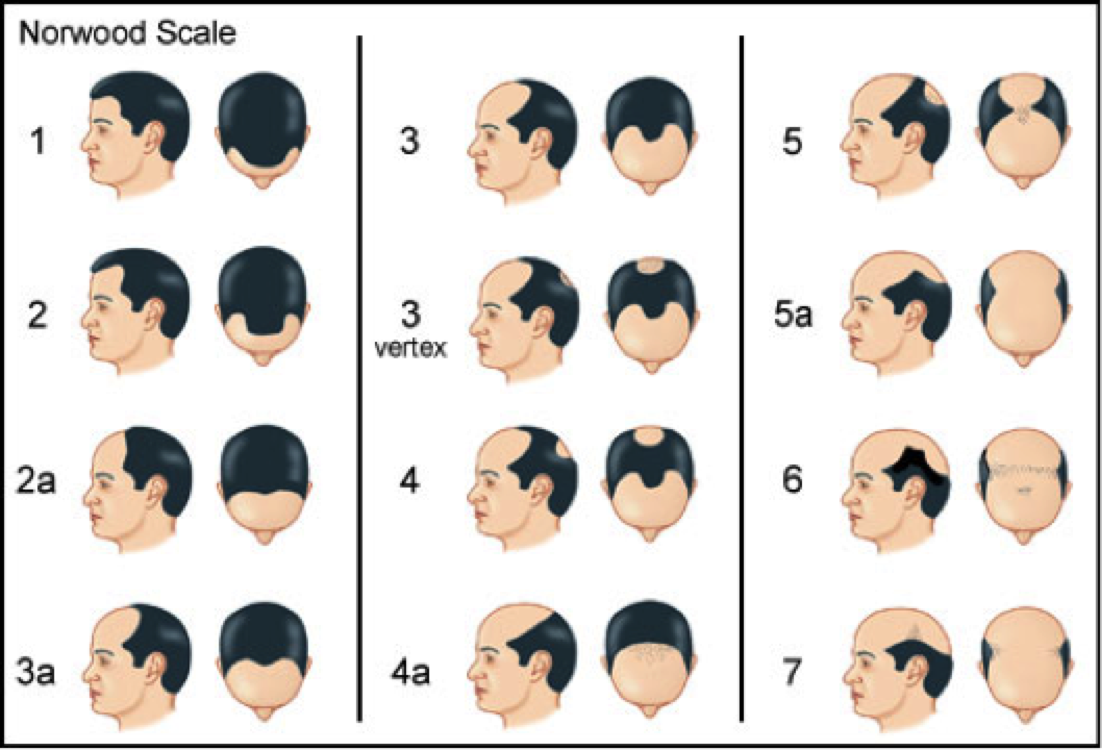Hair micrograft with Regenera: innovative solution against hair loss in St. Louis
With increasing concerns about hair loss affecting a significant portion of the world’s population, technological innovations are providing promising solutions.
Hair loss, whether due to genetic, hormonal, or environmental factors, can have a significant impact on self-confidence and quality of life. Fortunately, recent advances in regenerative medicine offer promising solutions to combat alopecia. Among these innovations, hair microtransplantation stands out as an innovative and promising therapeutic option, combining the principles of mesotherapy and traditional hair transplants to stimulate natural hair regrowth.
The result of the convergence between biotechnology and aesthetic medicine, the Regenera Activa hair micrograft uses the principles of cell regeneration to offer a long-lasting solution to baldness and hair loss problems.
Discover hair microtransplantation at the Biolaser Centre in Saint-Louis, near Basel, Belfort-Montbeliard, Colmar and Mulhous. Thanks to the Regenera Activatechnique, this method exploits stem cells to revitalize the scalp, offering a less invasive alternative to traditional hair transplantation with significant results. Contact us for a personalized consultation
What is the Regenera hair micrograft in Saint-Louis near Basel and Mulhouse?
The Evolution of Hair Treatments
Over the years, many solutions have been developed to fight alopecia. Traditional treatments include the use of drugs like Minoxidil or Finasteride, as well as surgical techniques such as strip hair transplantation (FUT) or follicular unit extraction (FUE). Although these methods have shown some effectiveness, they also have drawbacks, such as side effects, post-operative pain, and sometimes variable results.
What is hair micrografting?
Hair microtransplantation represents a major advance in the field of hair treatments. It stands out for its innovative approach that uses the patient’s own regenerative cells to stimulate hair regrowth. Unlike traditional transplant techniques, hair micrografting is less invasive and is based on the principles of regenerative medicine.
Principles of Hair Micrograft
The concept of hair micrograft is based on the use of mesenchymal stem cells and growth factors present in the patient’s skin tissue, which helps prevent rejection and potential complications. These stem cells are known for their multipotent properties, capable of differentiating into different cell types and secreting bioactive molecules. These molecules play a crucial role in reactivating damaged cells and stopping inflammation, which is especially beneficial for patients with androgenetic alopecia. A micrograft session can be enough to normalize hair loss and significantly thicken the hair. By taking a small sample of skin, often behind the ear, the regenerative cells are isolated and concentrated using advanced technology, such as that developed by the Regenera laboratory. These cells are then injected back into the scalp, where they promote the regeneration of hair follicles and stimulate hair growth.
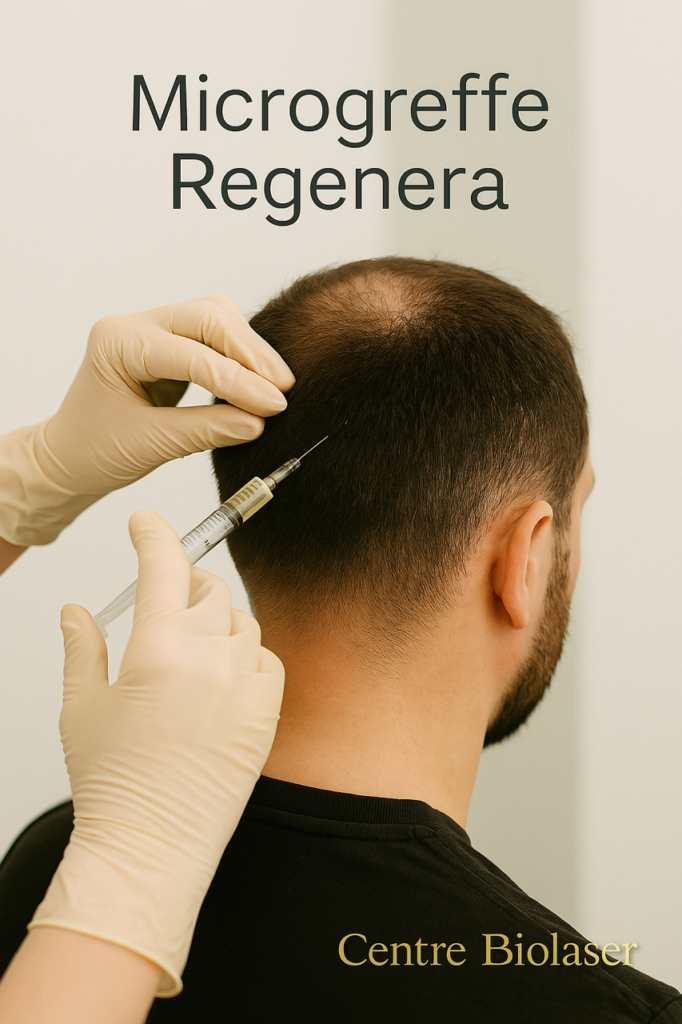

The Regenera laboratory and its technology
Regenera Laboratory is a pioneer in the field of regenerative medicine, specializing in the development of innovative technologies for the treatment of various medical conditions, including hair loss. Founded on years of scientific and clinical research, Regenera is recognized for its commitment to excellence and innovation. The lab works closely with researchers, physicians , and healthcare professionals to develop effective and safe solutions that improve patients’ quality of life.
The Regenera Activa device
The key technology developed by Regenera is the Regenera Activa device, an advanced method for the extraction and application of regenerative cells. Here’s how this revolutionary device works:
- Tissue sampling : A small sample of skin tissue is usually taken behind the patient’s ear, where the density of regenerative cells is high.
- Regenerative cell preparation : The tissue collected is placed in the Regenera Activa device, which processes it to isolate and concentrate stem cells and growth factors. This process uses a method of mechanical disintegration and centrifugation to separate the regenerative cells from the tissue matrix.
- Cell injection : The concentrated regenerative cells are then injected into the areas of the scalp affected by hair loss. These cells promote the regeneration of hair follicles and stimulate hair regrowth in a natural way.
Benefits of Regenera Technology
Regenera technology has several distinct advantages that make it a great option for the treatment of alopecia:
- Use of autologous cells : Since the cells used come from the patient’s own body, the risk of rejection or allergic reactions is significantly reduced. This ensures greater safety and tolerability of the treatment.
- Minimally invasive procedure : Unlike traditional hair transplants that can be invasive and require an extended recovery period, hair microtransplantation with Regenera is relatively quick and painless. Patients can usually return to their normal activities soon after the procedure.
- Natural and long-lasting results : By regenerating existing hair follicles and stimulating the growth of new hair, Regenera technology offers natural results that last over time. Patients observe a gradual improvement in the density and quality of their hair.
- Efficient and fast process : The micrografting procedure with Regenera is usually performed in a single session, which lasts about an hour. The results start to be visible after a few months, with continuous improvement over time.
- Adaptability : Regenera technology can be used to treat different types of alopecia, including androgenic alopecia, scarring alopecia, and diffuse alopecia. This makes it a versatile solution for various patient profiles.
- Certification: ISO, CE certified, approved by KHFDA and listed by the US FDA.

The Hair Micrograft Procedure at Biolaser Medical Center in Saint-Louis
Initial consultation and assessment
The first step in hair microtransplantation is an initial consultation with a specialist doctor at the Aesthetic and Hair Center in Saint-Louis, near Basel, Mulhouse and Belfort-Montbéliard. This meeting allows us to:
- Assess the status of hair loss : The doctor will examine the scalp to determine the extent and cause of the alopecia. Tests may be performed to assess hair density and follicle condition.
- Déterminer l’éligibilité du patient :
- The specialist will check the patient’s medical history to ensure that there are no contraindications to the procedure.
- The doctor performs a clinical diagnosis to identify the stage of alopecia according to the Hamilton or Ludwig scale, depending on the patient’s gender
- The patient’s expectations will also be discussed to ensure realistic goals.
- Plan treatment : If the patient is deemed capable, a personalized treatment plan will be developed. The doctor will explain the process in detail, the expected results, and answer any questions the patient may have.
Skin tissue sampling
Once the initial consultation is complete and the treatment plan is established, the hair micrograft procedure begins with the removal of skin tissue:
- Collection area: A small sample of skin, usually the size of a grain of rice, is taken behind the ear (The collection of stem cells is done via a biopsy tool called “punch” of only 2.5 mm in diameter to extract three to four grafts). This area is chosen because of its high density of regenerative cells and its discretion.
- Local anesthesia : Local anesthesia is applied to minimize patient discomfort during the collection. The process is quick and painless, taking only a few minutes.
Regenerative Cell Preparation
The tissue sample taken is then processed to isolate and concentrate the regenerative cells:
- Treatment with the Regenera Activa device : The tissue is placed in the Regenera Activa device, where it is mechanically disintegrated and centrifuged to separate the regenerative cells and growth factors.
- Cell isolation : Isolated regenerative cells are collected in a solution for injection. This process is carried out quickly to ensure the viability of the cells.
Injection of cells into the scalp
Once the regenerative cells have been prepared, they are ready to be reinjected into the scalp:
- Injection techniques : The doctor uses fine needles to inject the regenerative cells directly into the areas of the scalp affected by hair loss. Injections are performed uniformly to ensure optimal cell distribution.
- Procedure Duration : The injection of the cells takes about 30 minutes, depending on the size of the area to be treated. The procedure is usually well tolerated, with minimal pain or discomfort.
Follow-up and post-treatment care
After the procedure, proper follow-up and care are essential to maximize results:
- Post-Operative Instructions : The doctor will provide detailed instructions on how to care for the scalp after the procedure. This can include avoiding certain hair products, limiting sun exposure, and managing any redness or swelling.
- Follow-up appointment : A follow-up consultation(s) will be scheduled to assess the patient’s progress and address any questions or concerns. These appointments allow you to monitor the progress of hair regrowth and adjust the treatment if necessary.
- Long-term results : The first results can be seen after a few months, with continuous improvement over time. Hair regrowth becomes more visible and hair density gradually improves.
Indications for hair microtransplantation
Types of Alopecia Treated
Hair micrografting is a versatile technique capable of treating various types of alopecia. Here are some of the most commonly treated hair conditions:
- ALOPÉCIE ANDROGÉNÉTIQUE :
- Also known as male or female pattern baldness, this condition is often genetic and hormonal. Hair microtransplantation can help revitalize miniaturized hair follicles, promoting hair regrowth and slowing the progression of alopecia.
Other scalp diseases can also be treated:
- Alopécie cicatricielle :
- This form of alopecia is caused by scarring on the scalp, which can destroy hair follicles. Hair micrografting can stimulate the regeneration of tissues and follicles in scarred areas, improving hair density.
- Alopécie diffuse :
- Often linked to stressors, hormonal imbalances, or nutritional deficiencies, diffuse alopecia causes a general thinning of the hair all over the scalp. Hair micrografting can help strengthen weakened follicles and stimulate even regrowth.
- Effluvium télogène :
- This form of temporary hair loss often occurs after significant physical or emotional stress. Hair microtransplantation can speed up the hair regeneration process, promoting faster and healthier regrowth.
Candidate Selection Criteria
To benefit from hair microtransplantation, patients must meet certain eligibility criteria. The main aspects evaluated by the doctors are:
- État de santé général :
- Patients must be in good general health to undergo the procedure. A detailed medical history will be reviewed to ensure that there are no medical conditions that could complicate treatment.
- État du cuir chevelu :
- The scalp should be healthy and free of infections or serious dermatological conditions. An examination of the scalp will help determine if the patient is a good candidate for micrograft.
- Niveau de perte de cheveux :
- Patients with mild to moderate hair loss usually respond better to hair microtransplantation. Individuals with advanced hair loss may also benefit from the treatment, although results may vary.
- Criteria for men: Micro hair transplantation is recommended for men who have not yet reached stage 5 of the Hamilton scale. This treatment is optimal for those in the early stages of baldness, specifically up to stage 3 on the Hamilton scale.
- Criteria for women: For women, this technique is appropriate if they have not passed stage 2 on the Ludwig scale. It is advisable to opt for hair microtransplantation when hair loss is not extremely advanced, in order to maximize the chances of scalp revitalization and hair regrowth
- In summary, micrografting offers a promising solution for those in the early stages of baldness, looking to improve the density and health of their hair, as well as being a useful complementary option to traditional hair transplants.
- Expectatives réalistes :
- It is crucial that patients have realistic expectations about the results. Hair micrografting can improve hair density and quality, but it cannot always restore full hair to previous density levels.
Potential contraindications
Although hair microtransplantation is a safe procedure for most individuals, there are some contraindications to consider:
- Conditions médicales graves :
- Patients with severe or chronic uncontrolled diseases, such as diabetes, autoimmune disorders, or active infections, may not be suitable candidates for microtransplantation.
- Problèmes de coagulation :
- People with bleeding disorders or taking blood thinners should be evaluated with caution, as these conditions may increase the risk of bleeding and postoperative complications.
- Grossesse et allaitement :
- It is generally recommended that pregnant or breastfeeding women postpone the procedure until after pregnancy and the breastfeeding period, due to hormonal changes and safety concerns.
- Réactions allergiques connues :
- Although rare, some patients may have allergic reactions to substances used during the preparation of regenerative cells. A screening assessment will help identify these potential risks.
Difference Between Regenera Micrograft and Avaneo Hair Mesograft
Hair micrograft and hair mesograft refer to similar procedures, both based on the use of autologous stem cells to stimulate hair regeneration. The principle is to exploit the mesenchymal stem cells present in the scalp to stimulate the follicular units. These cells possess multipotent properties and are able to secrete bioactive molecules that promote the regeneration of damaged cells while reducing inflammation. It is this mechanism that makes this approach particularly effective in the treatment of androgenetic alopecia.
The objective of these two techniques “hair micrograft or hair mesograft” is to strengthen the existing hair follicles, activate dormant ones and slow down hair loss, especially in cases of androgenetic alopecia. The two techniques mesograft of the Avaneo laboratory and hair micrograft of the Regenera laboratory consist of a sample of tissue or cells from the patient, whether isolated or concentrated, and then reinjected into the balding areas of the scalp, thus promoting natural hair regrowth.
Regenera hair micrograft is distinguished by its advanced protocol and cutting-edge technology, including the Regenera Activa device. The latter allows optimal extraction and preparation of stem cells, thanks to a disintegration and centrifugation method that guarantees a high concentration of growth factors and regenerative cells. Certified by international standards (ISO, CE, FDA), this technology ensures high safety and long-lasting results.
Expected results
Time to see results
Patients can expect a delay before seeing the full results of hair microtransplantation, as hair regeneration is a gradual process. Here’s a look at the typical results schedule:
- Premiers Mois (1-3 mois) :
- Patients may observe a reduction in hair loss soon after the procedure. However, it is normal not to see any significant regrowth in the first few weeks.
- Période Intermédiaire (3-6 mois) :
- Towards the end of the third month, signs of new growth may begin to appear. Newly formed hair will be thin and may not be immediately visible, but the overall density of the scalp will begin to improve.
- Résultats Complets (6-12 mois) :
- The optimal results of hair microtransplantation usually become visible after six to twelve months. Hair continues to thicken and strengthen over time, providing a denser, healthier appearance.
Improved Hair Density
Hair microtransplantation has proven its effectiveness in improving hair density. Patients can expect:
- Increased hair density : Regenerated hair follicles produce new hair, increasing overall density.
- Improved hair texture and quality : New hair is often thicker and more robust, which improves the texture and quality of existing hair.
- Reduction of hair loss: Hair loss is usually stopped after treatment, with regrowth of existing hair.
Before/After 1 hair micrograft session
“The results presented below are the result of individual cases and do not guarantee similar results for all patients.”
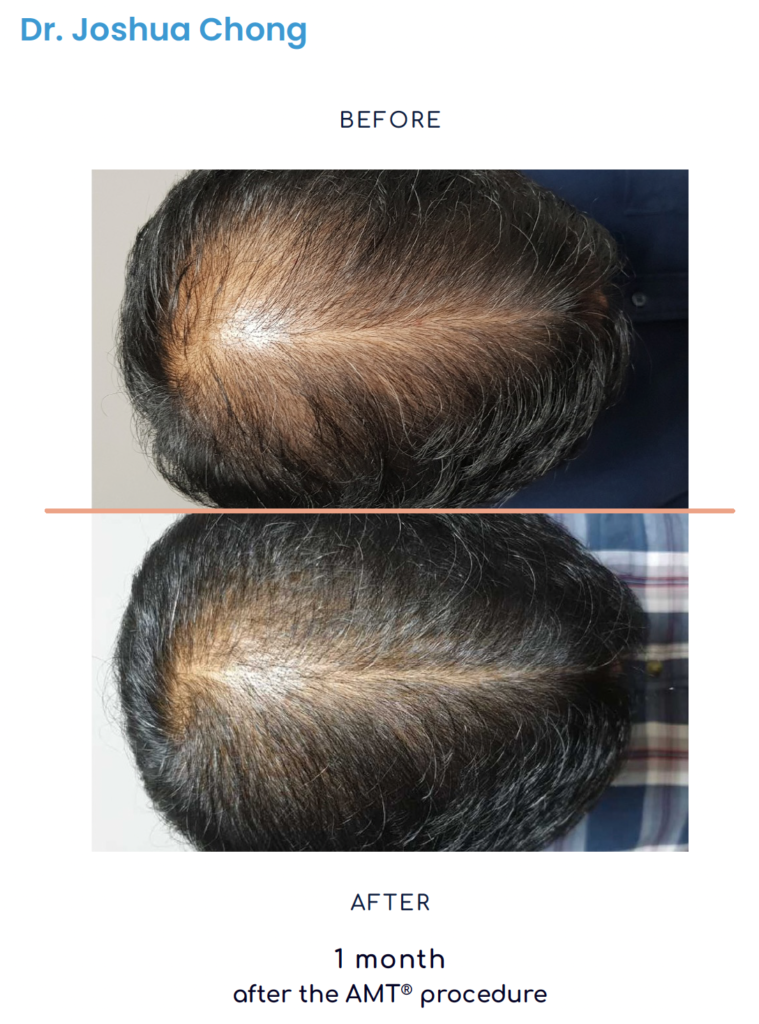
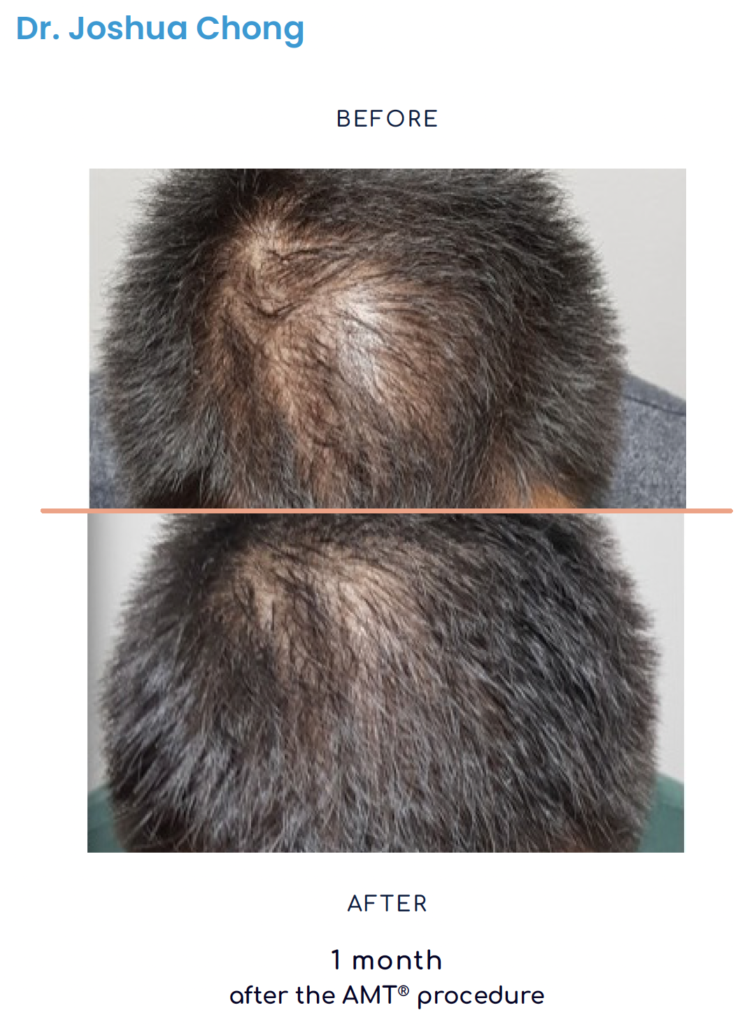
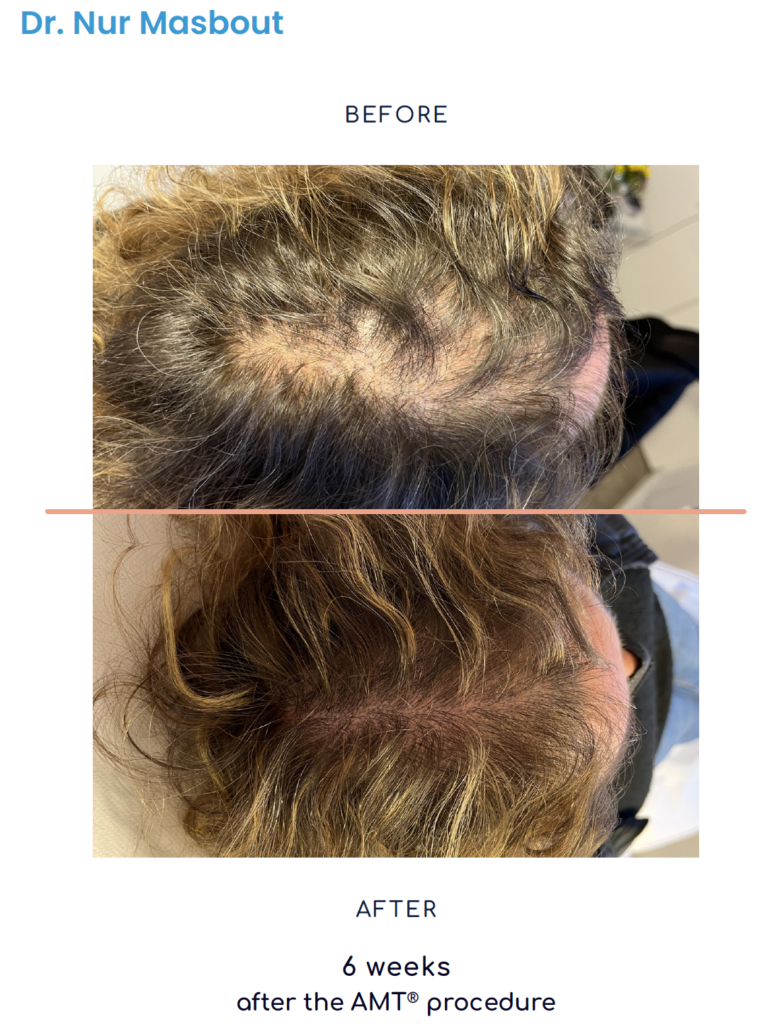
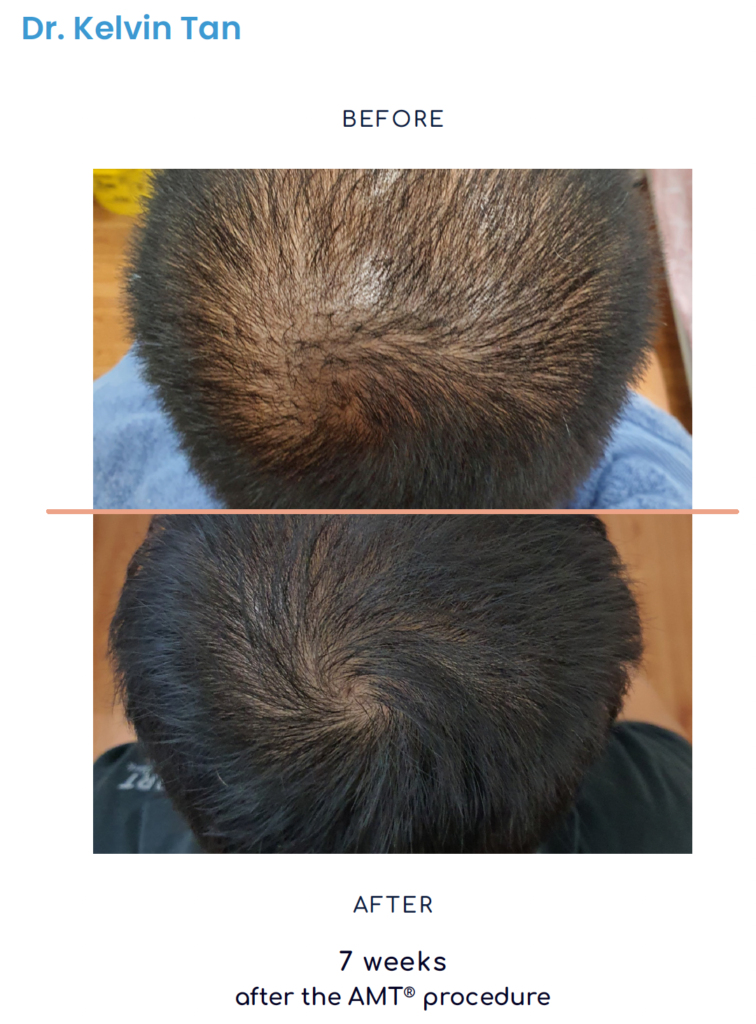
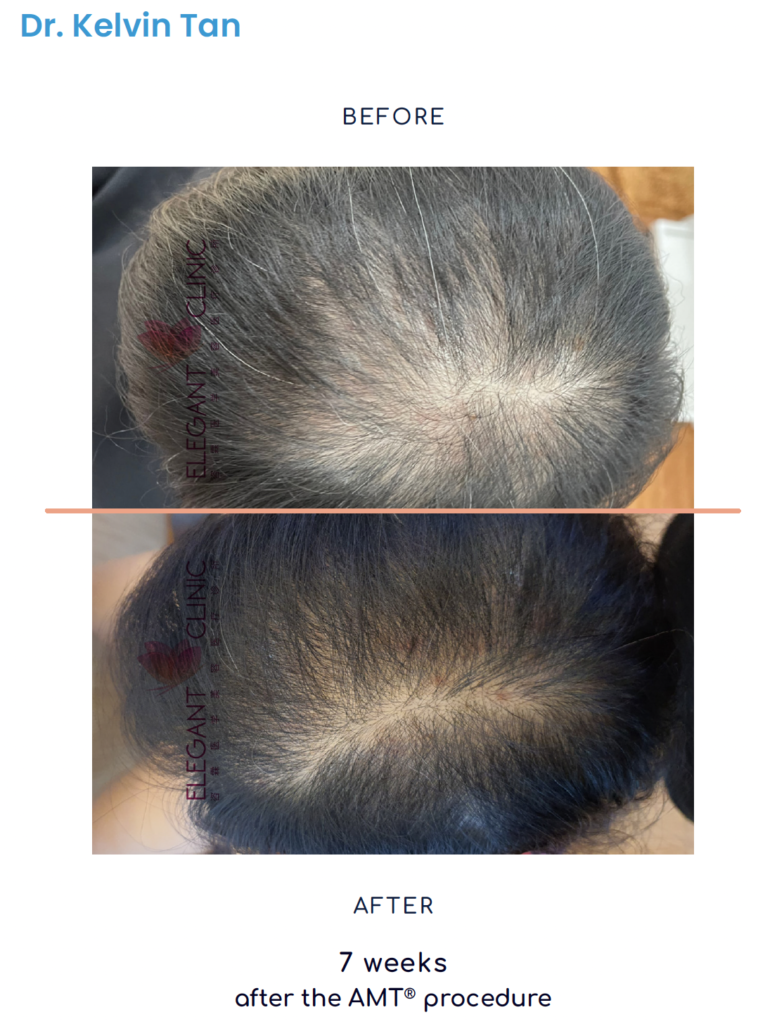
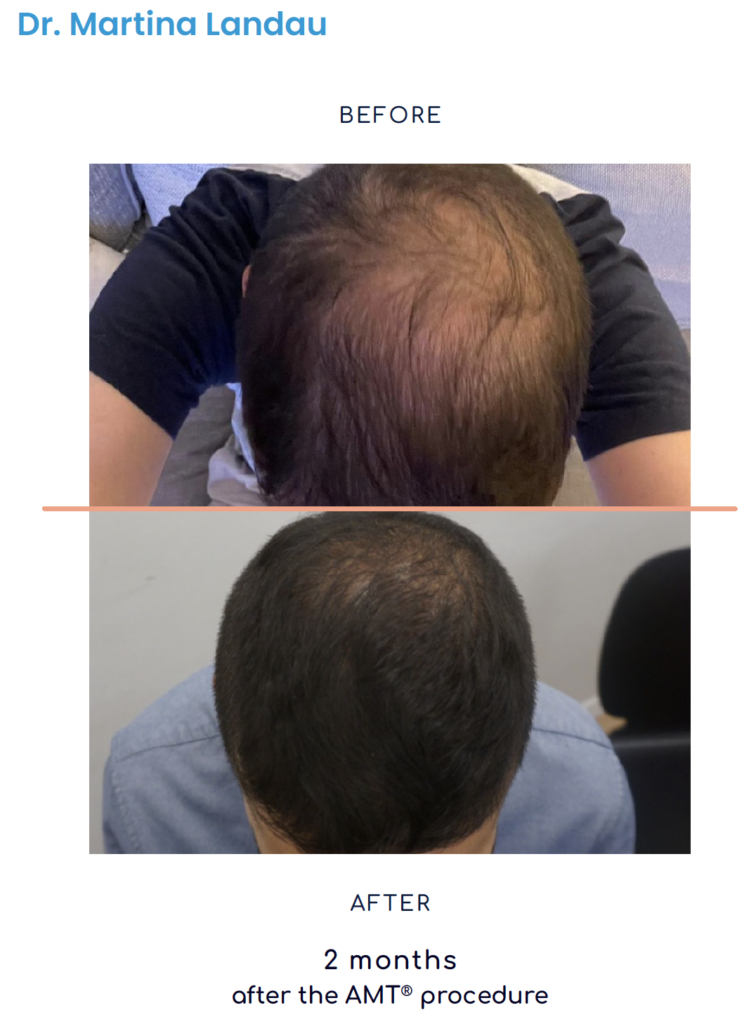
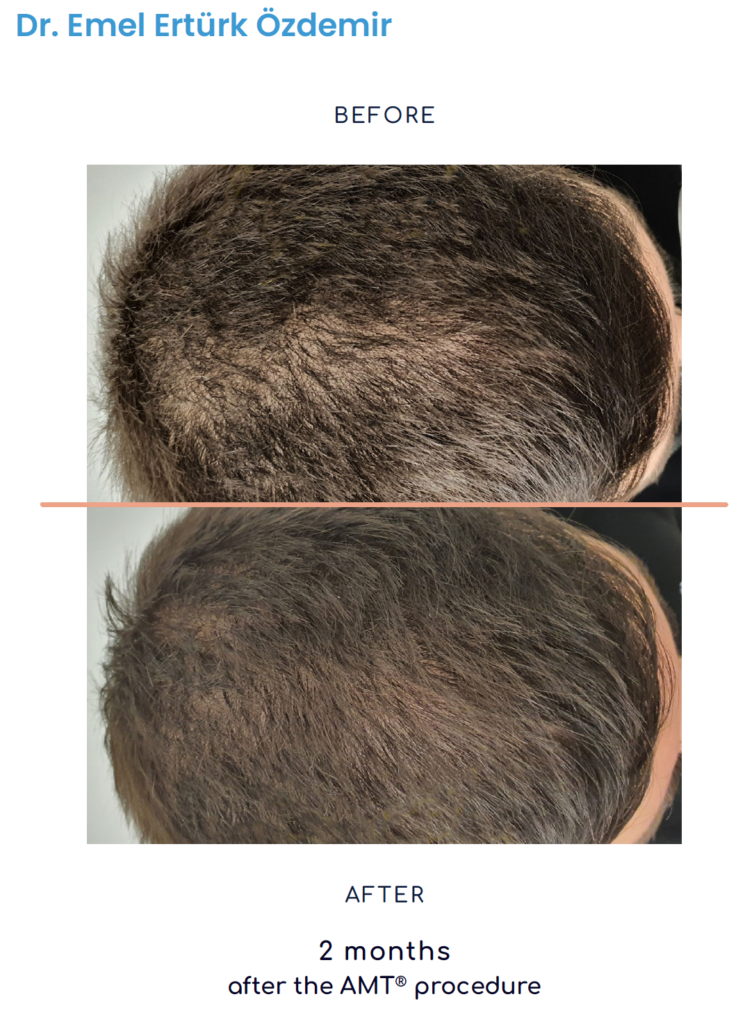
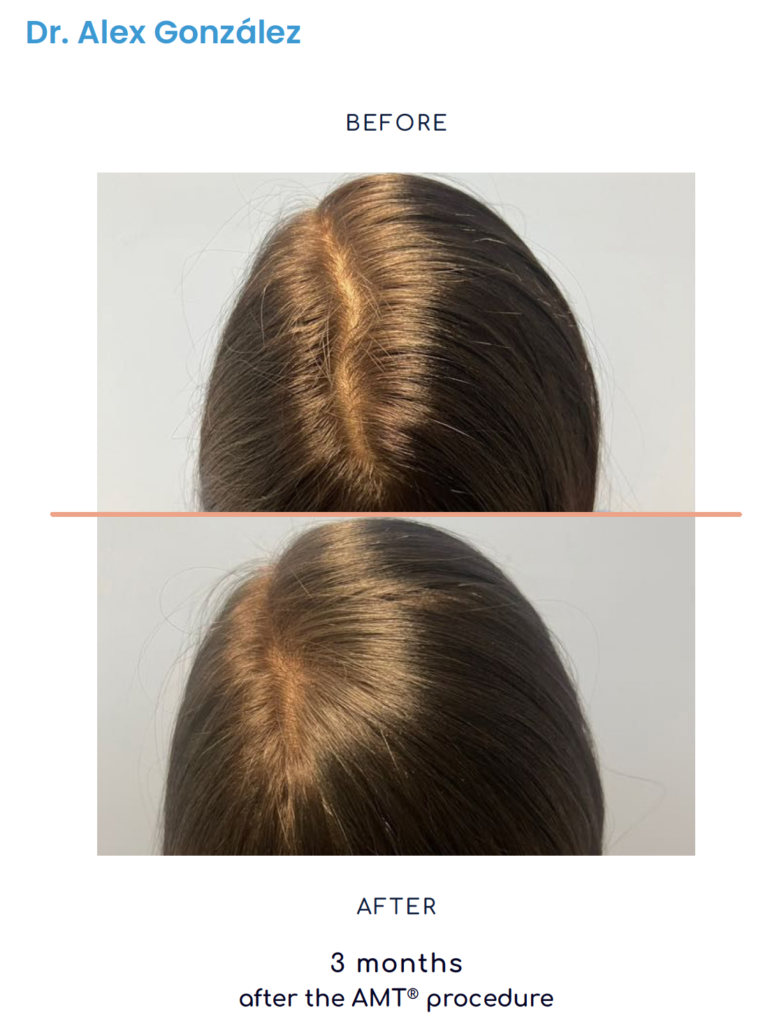
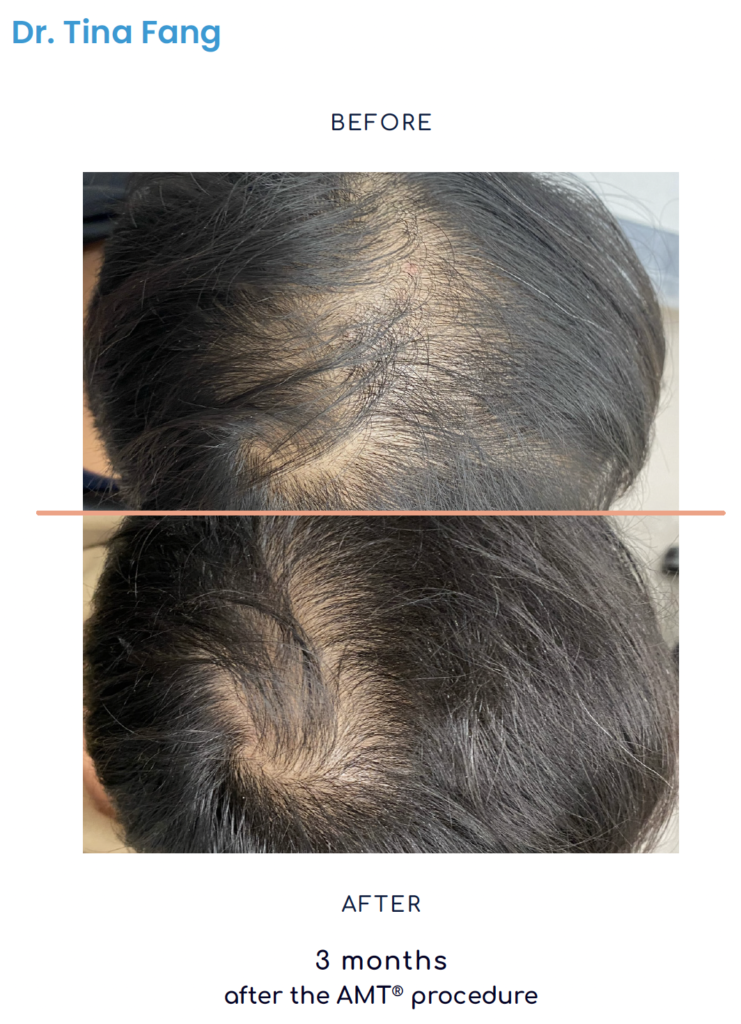
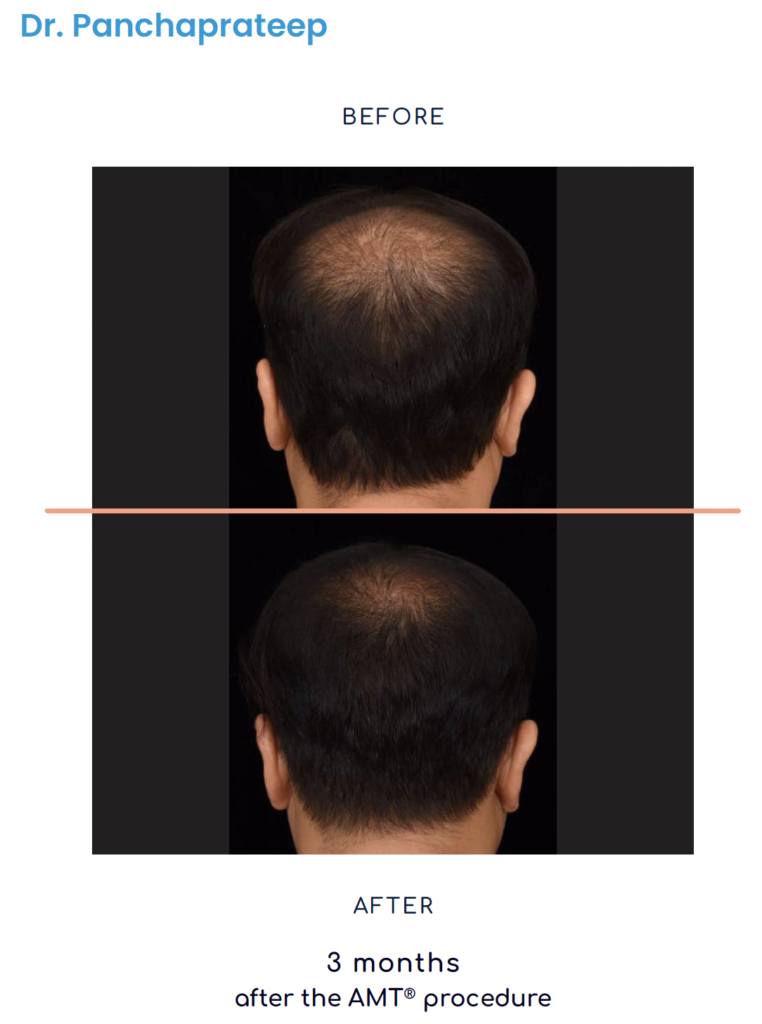
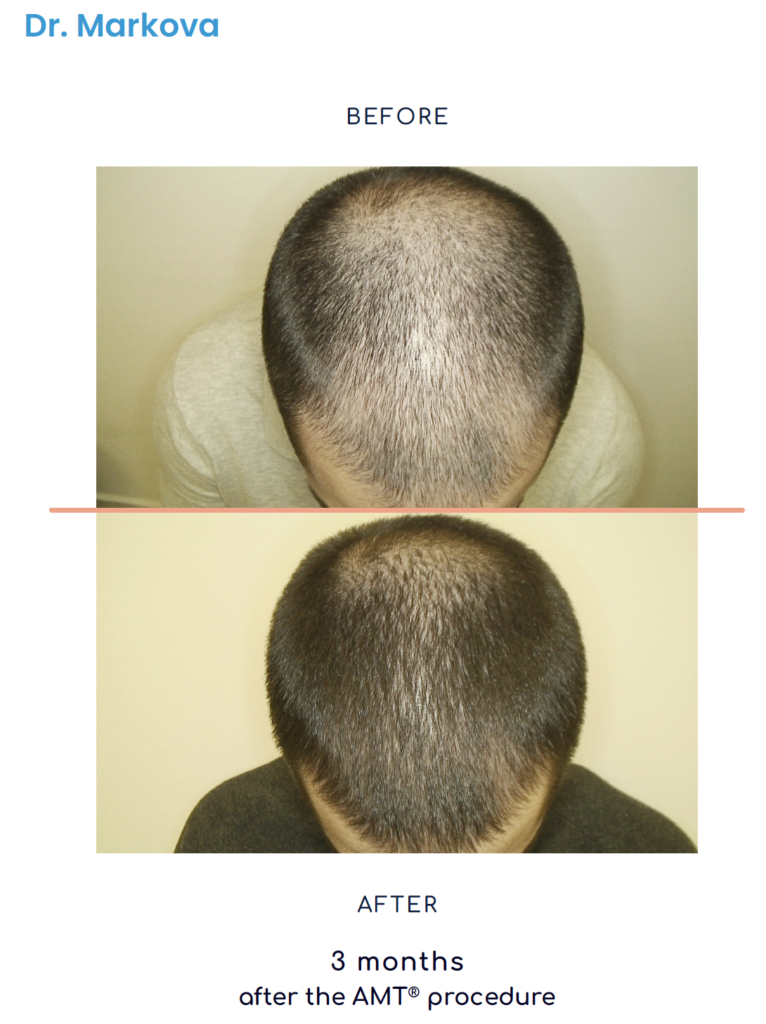
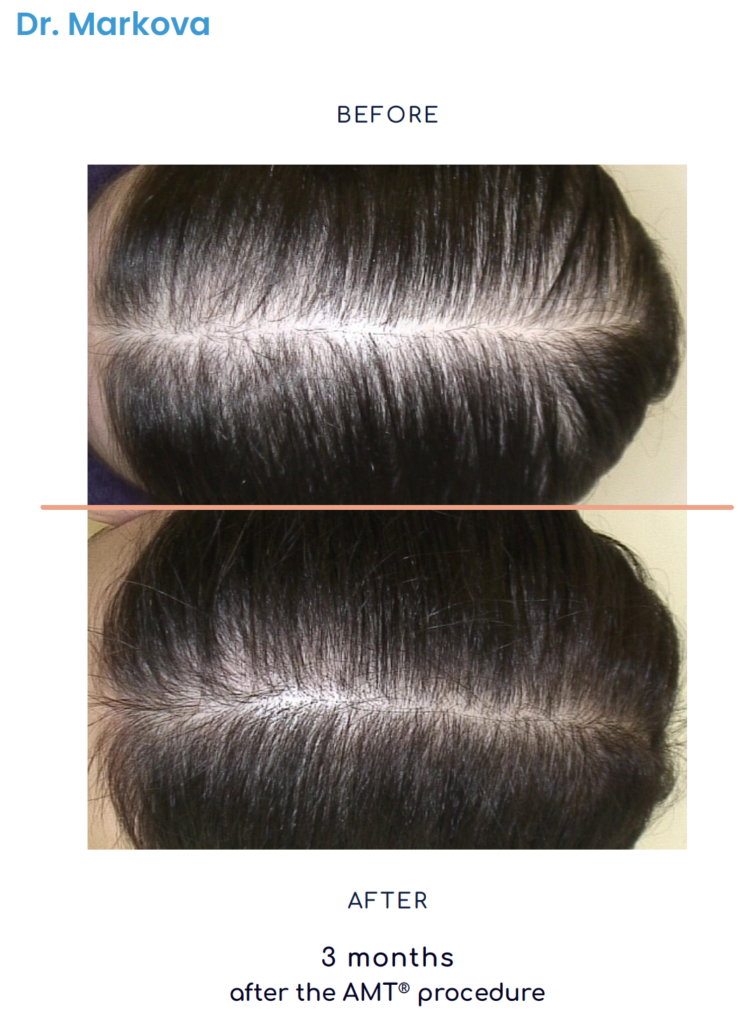
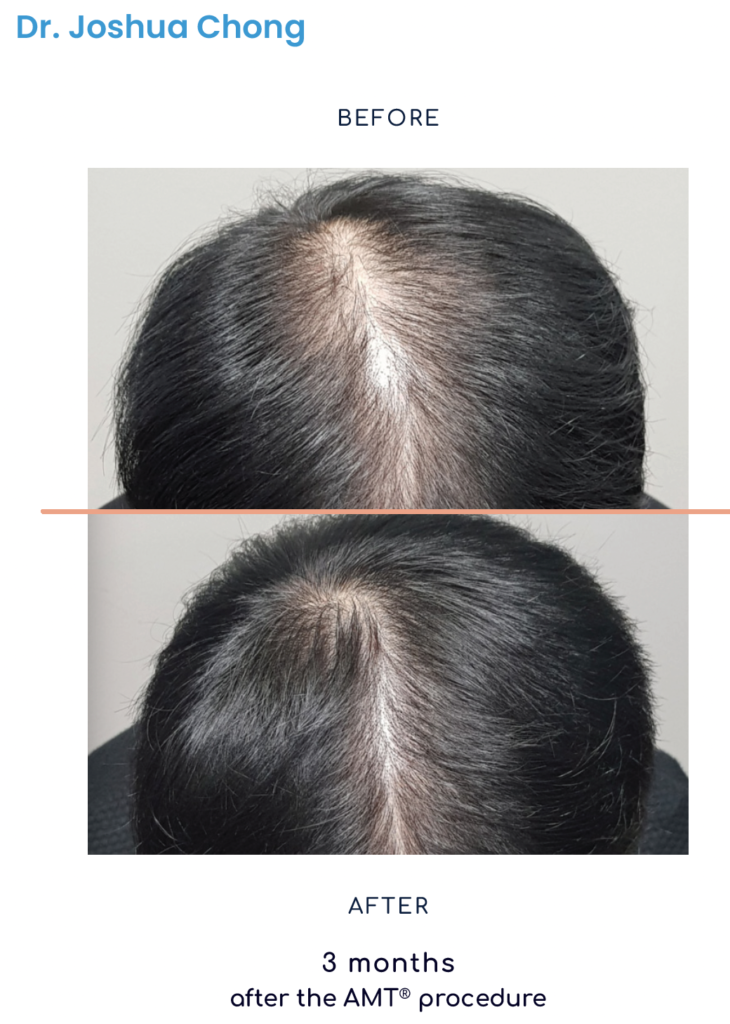
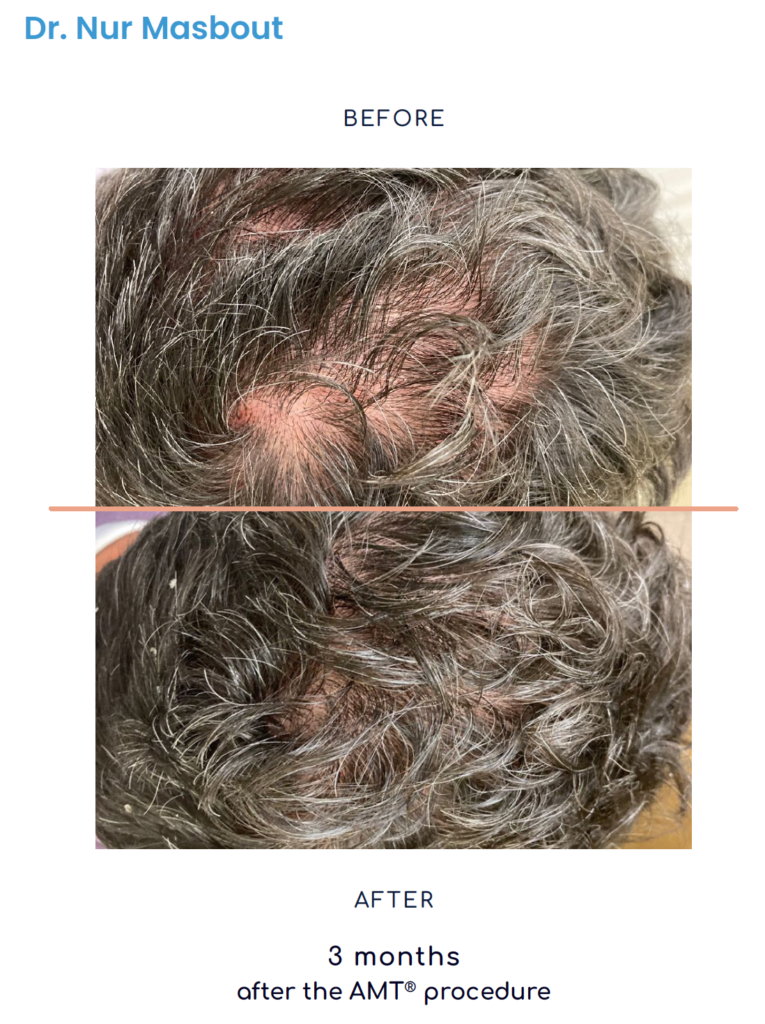
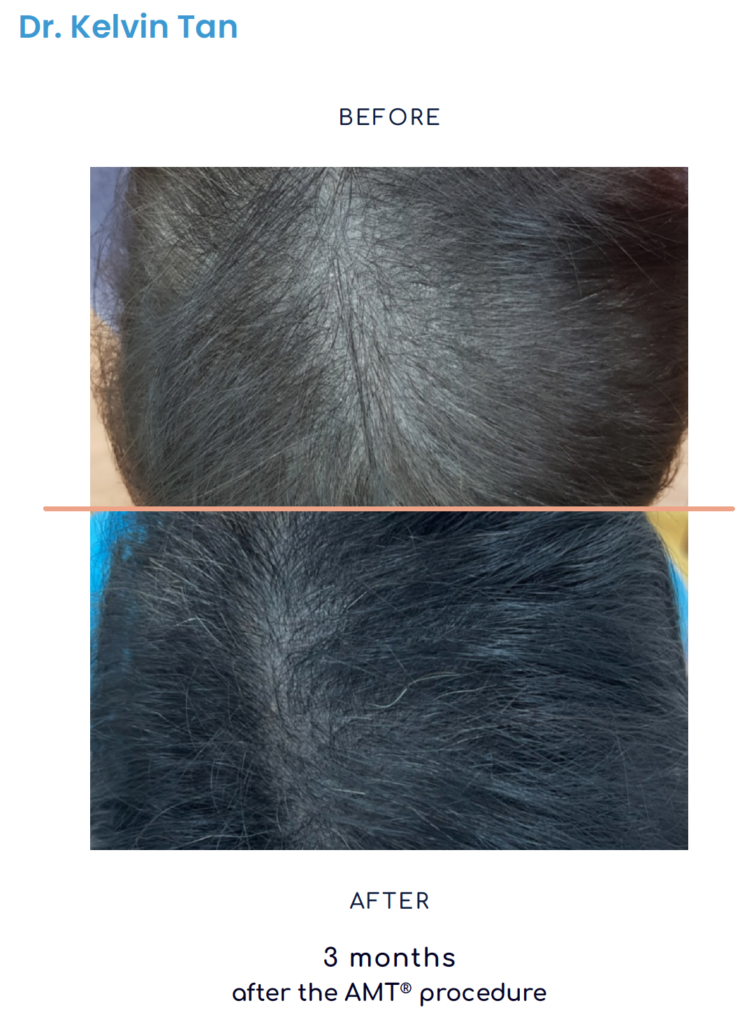
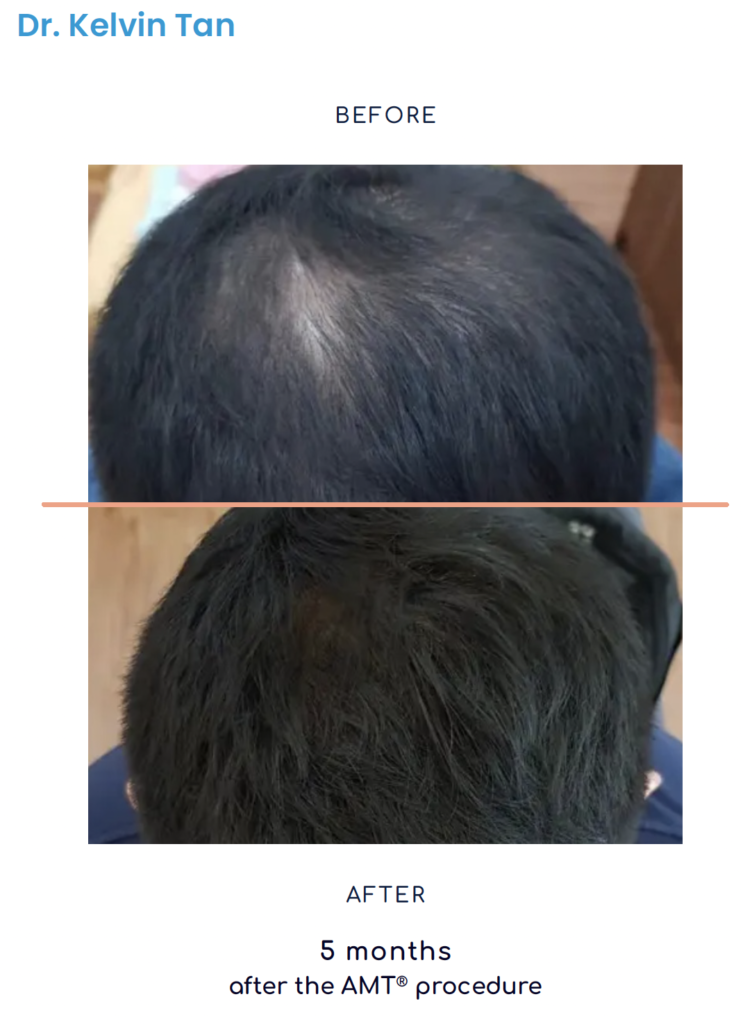
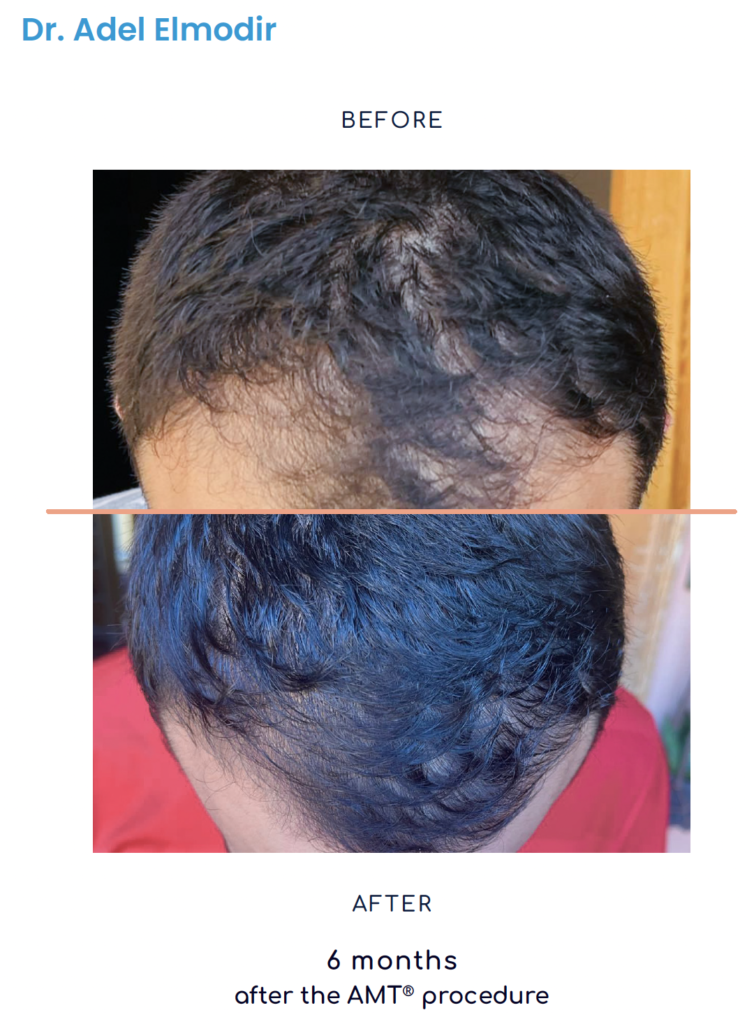
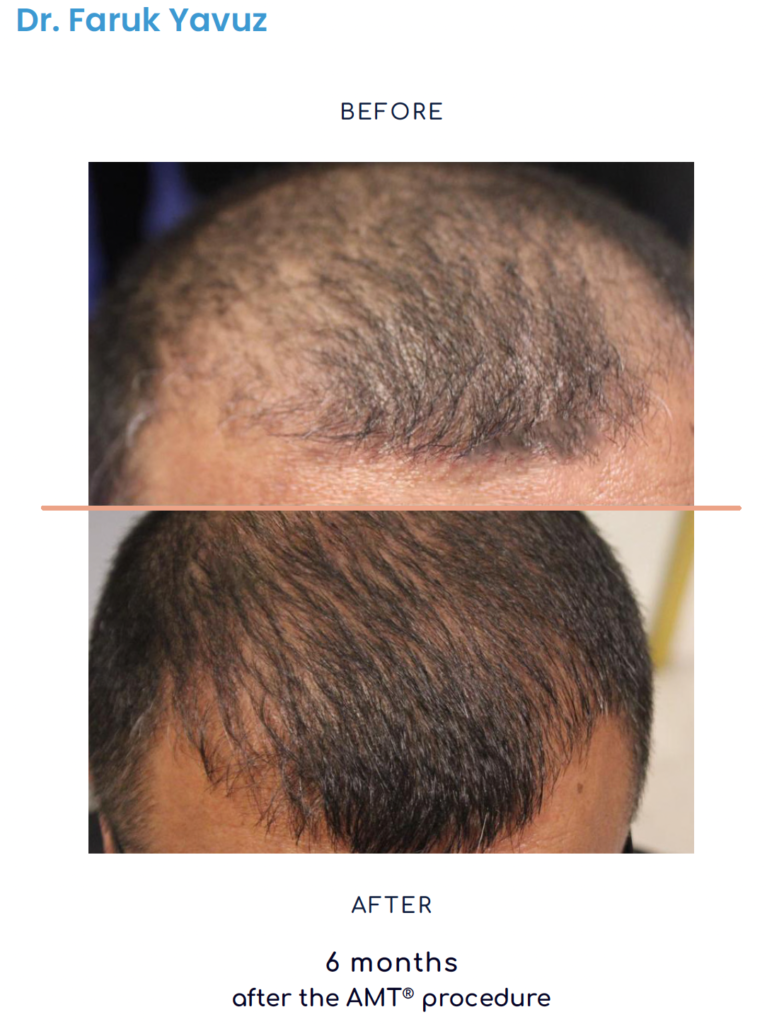
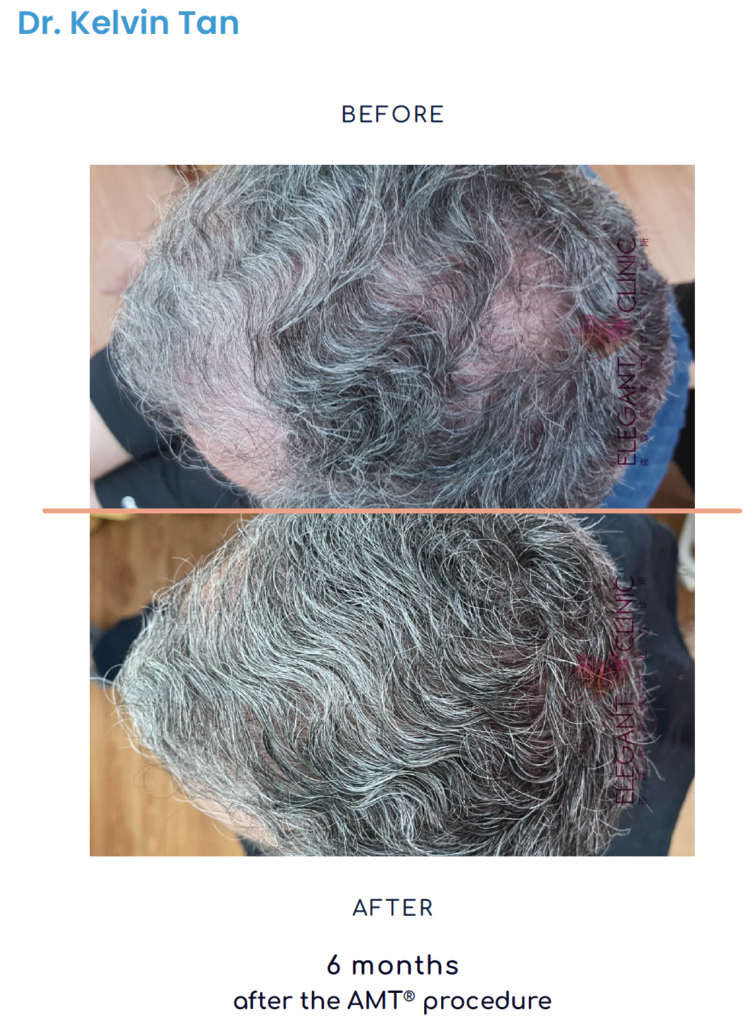
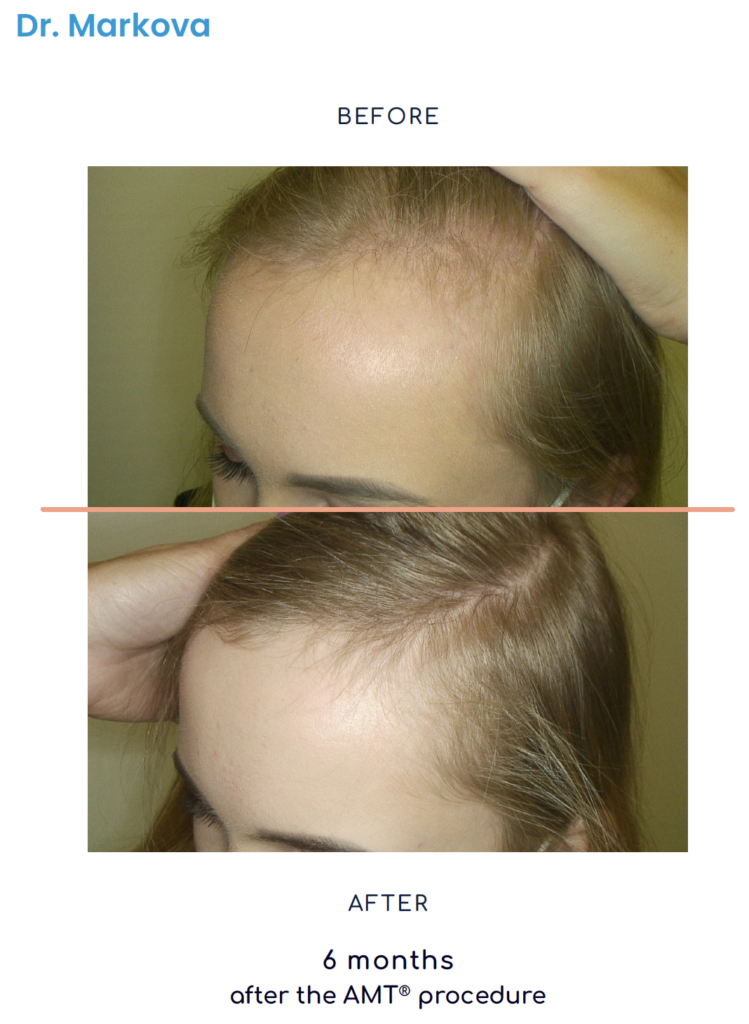
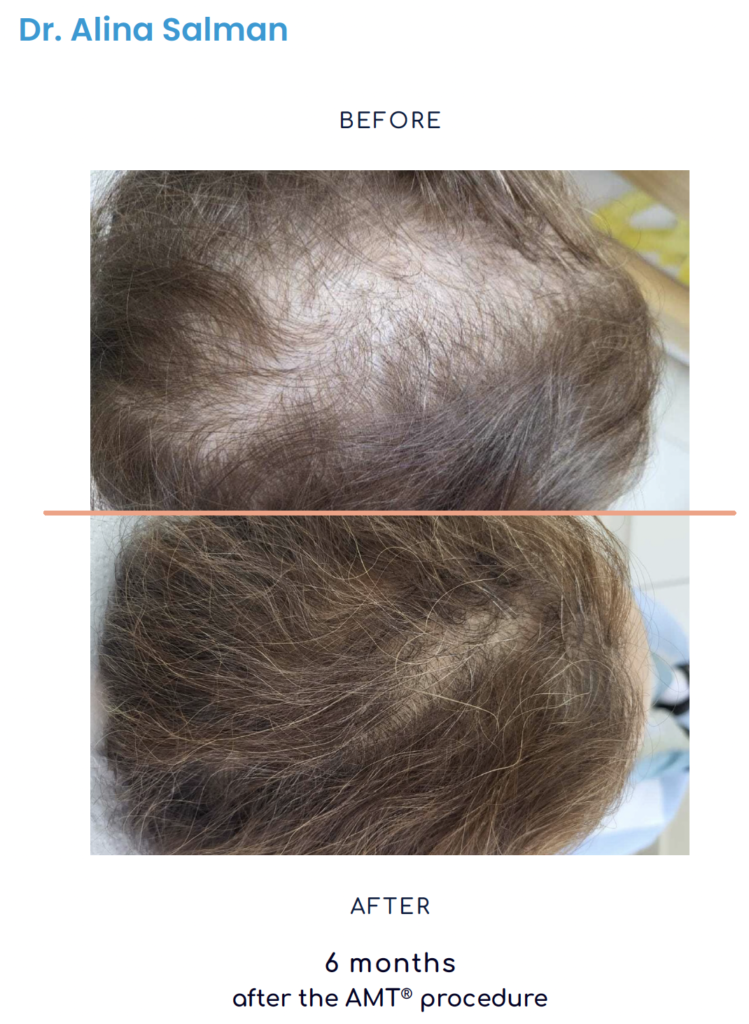
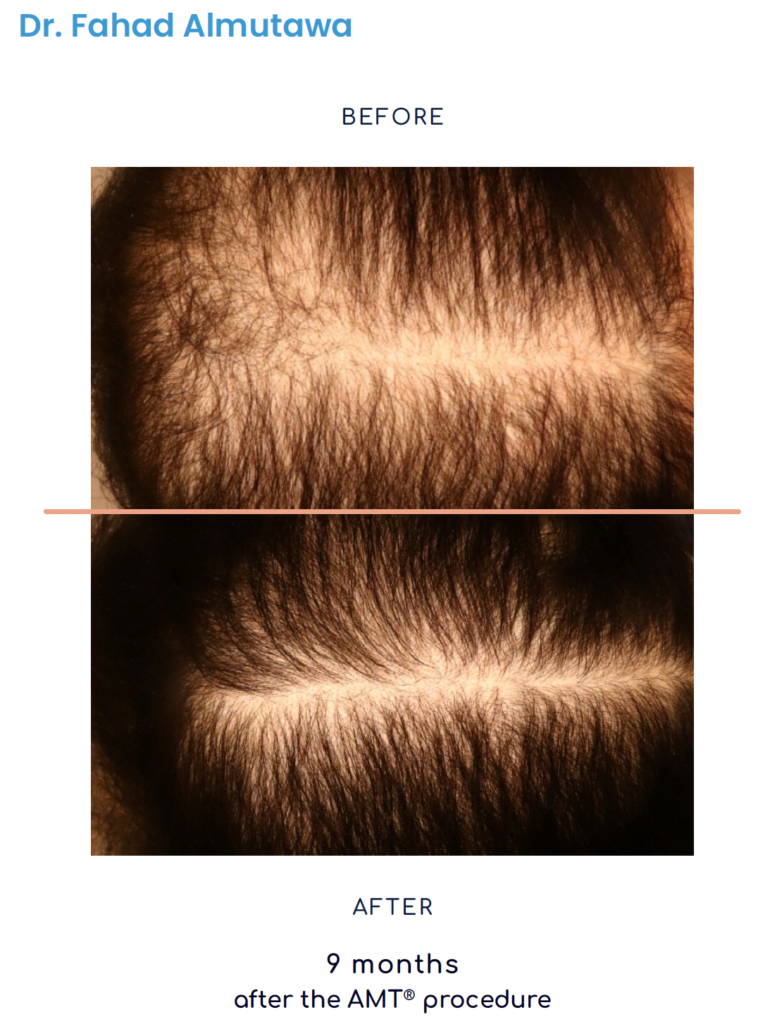
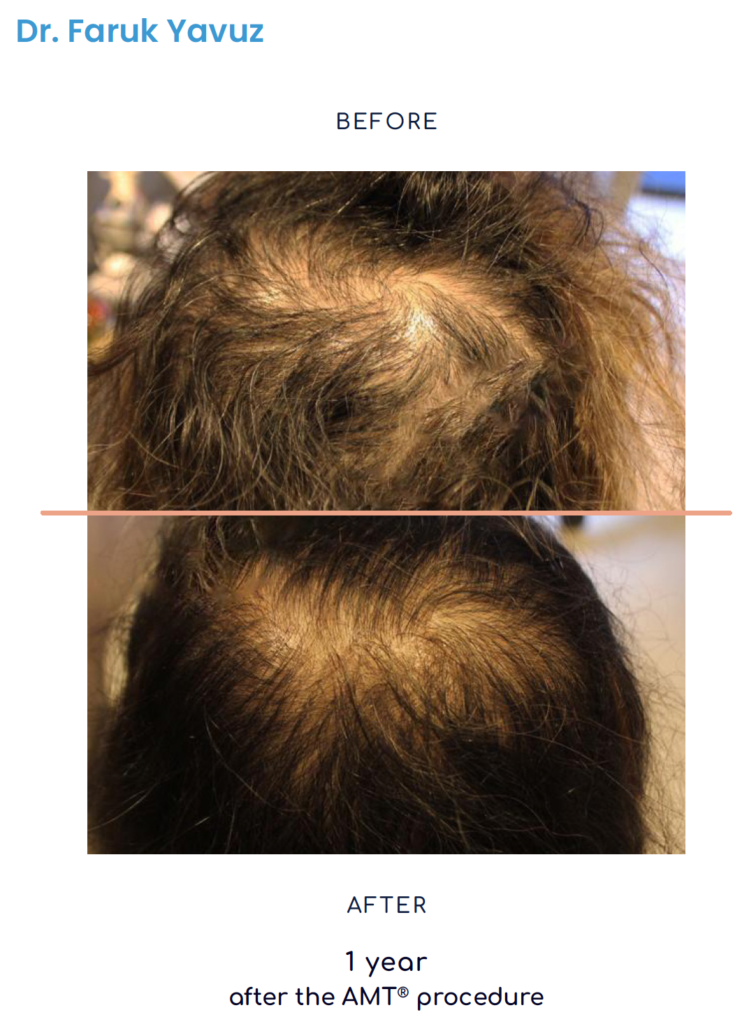
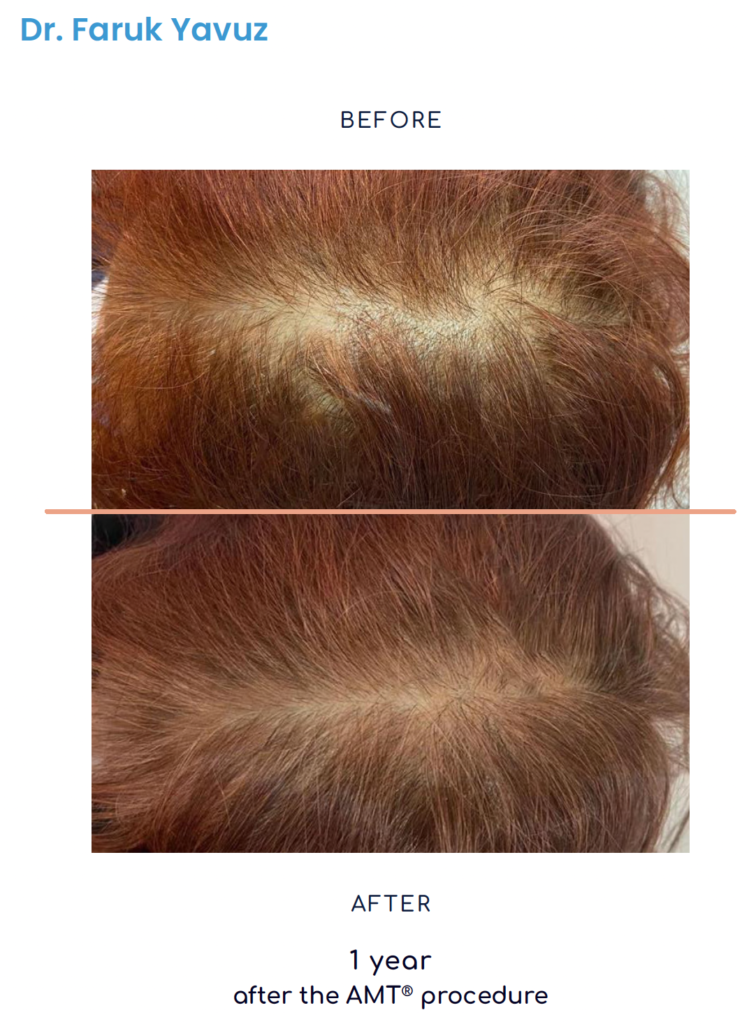
HAIR TREATMENTS – HAIR AND SCALP
| Hair treatment | Rates |
|---|---|
| Growth factor injections | 350 €/ session |
| Growth factor injections : 4 sessions | 1290 € |
| Hair mesotherapy or cellbooster : 2 vials or 6 ml | 350 €/ session |
| Biomimetic Peptides – Dr. Cyj | 350 €/ session |
| Regenera Hair Micrograft = Stem Cells | 1800 € |
| Microneedling with Growth Factors | On quote |
| LED and capillary photobiomodulation | 50 €/ session |
| LED and capillary photobiomodulation : 10 sessions | 390 € |
Conclusion
Hair microtransplantation offers a unique opportunity to regain dense and natural hair, while reconnecting with confidence and self-esteem. With its innovative technology and long-lasting results, this revolutionary procedure is an effective solution for hair loss. Don’t let baldness or hair loss affect your quality of life.
By choosing the Biolaser medical center in Saint-Louis, located near Mulhouse, Belfort, Colmar and Basel, you benefit from high-quality care at competitive rates, provided by highly qualified professionals. Our state-of-the-art facilities guarantee optimal care. In addition, the possible integration of micrografting with other hair treatments allows for a multidisciplinary approach, maximizing the health benefits of your hair.
These elements make the Biolaser center a trusted choice for those dealing with androgenetic alopecia, offering a glimmer of hope and a path to reclaiming confidence and self-esteem. Take the first step towards a hair transformation by booking your consultation today. Take back control of your image and rediscover full, blooming hair.
WE ANSWER YOUR QUESTIONS
Frequently Asked Questions about the Procedure
Q: What is hair micrograft?
A: Hair micrograft is a hair loss treatment technique that uses the patient’s own regenerative cells to stimulate hair growth. It involves taking a small sample of skin tissue, isolating the regenerative cells, and injecting them into sparse areas of the scalp.
Q: How long does the procedure take?
A: The hair micrograft procedure usually takes between one and two hours. This includes the time required for tissue collection, preparation of regenerative cells, and injections into the chevel leather
Q: Is the procedure painful?
A: Hair micrografting is performed under local anesthesia, which minimizes pain and discomfort during the procedure. Patients may experience mild discomfort during and after injections, but this is usually short-lived.
Q: When can I resume my normal activities? A: Most patients can return to their normal activities the day after the procedure. It is advisable to avoid strenuous physical activities and excessive sun exposure for the first few days after treatment.
Safety and Side Effects
Q: Is hair micrograft safe?
A: Yes, hair micrografting is a safe procedure. By using autologous cells (from the patient’s own body), the risk of rejection or allergic reactions is minimized. In addition, the treatment is carried out by qualified healthcare professionals.
Q: What are the possible side effects?
A: Side effects of hair micrografting are rare and usually minor. They may include mild redness, swelling, or tenderness at the injection site. These effects usually disappear within a few days.
Q: Are there any contraindications to the procedure?
A: Contraindications include serious medical conditions, bleeding disorders, active scalp infections, and pregnancy or breastfeeding. A prior medical evaluation is required to determine the patient’s eligibility.
Compatibility with Other Hair Treatments
Q: Can I combine hair micrograft with other hair treatments?
A: Yes, hair microtransplantation can be combined with other hair treatments such as PRP (Platelet-Rich Plasma), medications such as minoxidil or finasteride, and laser therapies. It is important to discuss all options with your doctor to develop a treatment plan that is tailored to your needs.
Q: Are there any restrictions after the procedure?
A: After hair microtransplantation, it is recommended to avoid harsh hair treatments, coloring, and the use of chemicals for a few weeks. Follow your doctor’s advice to ensure optimal healing and best results.
Cost and Financing of Treatment
Q: What is the cost of hair micrograft?
A: The cost of hair micrograft can vary depending on the clinic, the extent of the hair loss, and the specific needs of the patient.
On average, the cost can be between 1500 and 5000 euros per session.
Q: Is the treatment covered by health insurance?
A: Hair micrograft is generally considered a cosmetic treatment and is not covered by health insurance. However, some insurance policies may offer partial coverage for specific conditions. It is advisable to check with your insurer.
In women: The Ludwig scale
The Ludwig classification is a system used to describe the different stages of female hair loss, especially androgenetic hair loss (androgenetic alopecia). This classification focuses mainly on decreasing hair density at the top of the scalp. Here is an overview of the three stages of the Ludwig classification:
Stage I
Description : Slight decrease in hair density on the top of the scalp. The frontal line usually remains intact.
Characteristics : Hair loss is moderate and may not be immediately noticeable. The hair may look thinner, but there are no distinct areas of baldness.
Stage II
Description : The decrease in hair density becomes more apparent. There is noticeable thinning at the top of the scalp, but again, the hairlineline remains relatively preserved.
Features : Hair loss is more obvious and can affect the overall volume of the hair. The affected areas may appear sparse, but there is still some hair coverage.
Stage III
Description : Hair loss is very advanced with a significant reduction in hair density on the top of the scalp. The frontal line may also begin to be affected.
Features : There are distinct areas of baldness or areas where the hair is extremely thin. Overall hair coverage is severely reduced.
Visualization
To better understand this classification, here is a visual representation of the three stages:
Conclusion
The Ludwig classification is a useful tool for assessing and describing the progression of female hair loss. If you see signs of hair loss, it’s important to see a dermatologist or hair care specialist for an accurate diagnosis and to discuss treatment options that are right for you.
The frontal hairline, also known as the frontal hairline, is the anterior border of the area where hair grows on the forehead. It marks the transition between the forehead and the scalp. In women, the hairlineline is usually located a little back from the forehead and forms a defined border between the skin of the forehead and the beginning of the hair.
In the context of Ludwig’s classification for hair loss in women, the frontal line is often preserved, especially in the early stages of hair loss. This means that although the hair may become thinner or thinning on the top of the scalp, the border of the hair at the front of the skull remains relatively intact.
In humans: The Norwood-Hamilton scale
The Norwood-Hamilton Scale is a classification system used to describe the different stages of male pattern baldness, also known as androgenetic alopecia. This scale helps categorize the progression of hair loss, which helps diagnose the condition and plan treatment. Here are the main stages of this scale:
Stage 1
Description : No significant or minimal hair loss. The frontal line remains intact with only a slight recession.
Characteristics : No visible baldness.
Stage 2
Description : Receding frontal line with more pronounced areas of hair loss on the temples.
Characteristics : Formation of symmetrical temporal gulfs, but hair loss remains moderate.
Stage 3
Description : Frontal line recession is more pronounced and deep, often accompanied by hair loss on the top.
Characteristics : Appearance of baldness on the vertex (the top of the scalp) in some variants.
Stage 4
Description : More advanced hair loss on the vertex and frontotemporal recession is more pronounced.
Features : A separate strip of hair separates areas of baldness on the forehead and top.
Stage 5
Description : Areas of hair loss on the forehead and top begin to come together.
Features : The strip of hair separating the two areas thins.
Stage 6
Description : The band of hair separating the frontal and vertex areas has disappeared.
Features : A large area of baldness extends over the forehead, top, and vertex, with limited hair coverage on the sides.
Stage 7
Description : The most advanced form of baldness.
Features : A crown of hair remains on the sides and back of the scalp, but the top is almost completely bald.
Visualization
To better understand this classification, here is a visual representation of the different stages of the Norwood-Hamilton scale:
Conclusion
The Norwood-Hamilton Scale is an essential tool for medical professionals to assess the progression of male pattern baldness. If you observe any signs of hair loss, it is recommended that you consult a dermatologist or hair care specialist for an accurate diagnosis and to discuss treatment options that are right for your situation.

